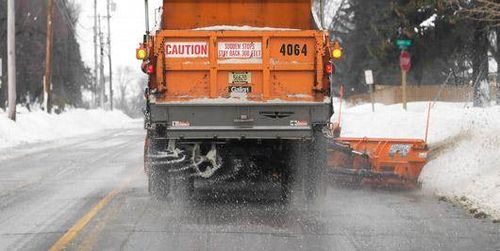
Difference between revisions of "Road salt, smart salting and winter maintenance"
m |
m |
||
| (5 intermediate revisions by the same user not shown) | |||
| Line 11: | Line 11: | ||
**[[How salt works and overview of deicing chemicals]] | **[[How salt works and overview of deicing chemicals]] | ||
**[[Environmental impacts of road salt and other de-icing chemicals]] | **[[Environmental impacts of road salt and other de-icing chemicals]] | ||
| − | **[[Other impacts of | + | **[[Other impacts of deicer use]] |
*[[Information on costs and economic impacts of road salt]] | *[[Information on costs and economic impacts of road salt]] | ||
*Management tools | *Management tools | ||
| Line 17: | Line 17: | ||
**[[Smart Salting Assessment tool (SSAt)]] | **[[Smart Salting Assessment tool (SSAt)]] | ||
**[https://www.pca.state.mn.us/water/statewide-chloride-resources Model Ordinances] | **[https://www.pca.state.mn.us/water/statewide-chloride-resources Model Ordinances] | ||
| + | ***[[File:Model Snow Ice Policy.docx|Model snow ice policy]] | ||
**[https://www.pca.state.mn.us/water/statewide-chloride-resources Model Snow and Ice Policies] | **[https://www.pca.state.mn.us/water/statewide-chloride-resources Model Snow and Ice Policies] | ||
*MPCA Smart Salting Training Program | *MPCA Smart Salting Training Program | ||
| Line 28: | Line 29: | ||
**[https://www.pca.state.mn.us/water/statewide-chloride-resources Technical reports and Chloride TMDLs] | **[https://www.pca.state.mn.us/water/statewide-chloride-resources Technical reports and Chloride TMDLs] | ||
**[https://www.pca.state.mn.us/water/water-permit-holders-and-chloride Chloride and NPDES Permits] | **[https://www.pca.state.mn.us/water/water-permit-holders-and-chloride Chloride and NPDES Permits] | ||
| − | |||
*[[References for Smart Salting (S2) and road salt winter maintenance]] | *[[References for Smart Salting (S2) and road salt winter maintenance]] | ||
*Chloride and groundwater | *Chloride and groundwater | ||
| Line 35: | Line 35: | ||
**[[Guidance for calculator to estimate chloride loading to groundwater from infiltration]] | **[[Guidance for calculator to estimate chloride loading to groundwater from infiltration]] | ||
| − | + | [[Category:Level 2 - Management/Winter management]] | |
| − | + | [[Category:Level 2 - Pollutants/Chloride]] | |
| − | |||
| − | |||
| − | |||
| − | |||
| − | |||
| − | |||
| − | |||
| − | |||
| − | |||
| − | |||
| − | |||
| − | |||
| − | |||
| − | |||
| − | |||
| − | |||
| − | |||
| − | |||
| − | |||
| − | |||
| − | |||
| − | |||
| − | |||
| − | |||
| − | |||
| − | |||
| − | |||
| − | |||
| − | |||
| − | |||
| − | |||
| − | |||
Latest revision as of 14:33, 23 November 2022

MPCA recommends a low-salt diet for Minnesota waters. Doctors tell us to stick to a low-salt diet. Our lakes and streams should follow the same advice. When winter comes and snow and ice build up on Minnesota roads, parking lots, and sidewalks, one of the most common reactions is to apply salt, which contains chloride, a water pollutant.
Salt pollutes. When snow and ice melts, the salt goes with it, washing into our lakes, streams, wetlands, and groundwater. It takes only one teaspoon of road salt to permanently pollute 5 gallons of water. Once in the water, there is no way to remove the chloride, and at high concentrations, chloride can harm fish and plant life. Less is more when it comes to applying road salt.
The following table of contents summarizes pages and sections in the manual that address road salt, Smart Salting (S2), and winter maintenance.
- Overview and impacts of road salt and deicers
- Information on costs and economic impacts of road salt
- Management tools
- MPCA Smart Salting Training Program
- Education Resources
- Educational resources for Smart Salting (S2). For more information on chloride resources, see Statewide chloride resources
- Success stories: salt reduction and cost saving examples
- Technical reports and Chloride TMDLs
- Chloride and NPDES Permits
- References for Smart Salting (S2) and road salt winter maintenance
- Chloride and groundwater
- Impacts of stormwater infiltration on chloride in Minnesota groundwater - White paper produced for the Minnesota Groundwater Association
- Calculator for estimating chloride loading to groundwater
- Guidance for calculator to estimate chloride loading to groundwater from infiltration
This page was last edited on 23 November 2022, at 14:33.
